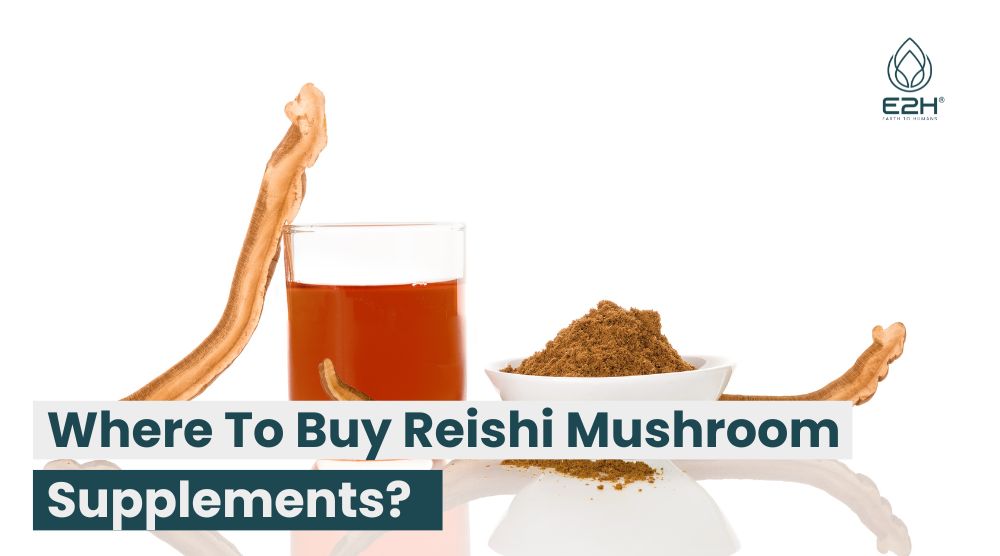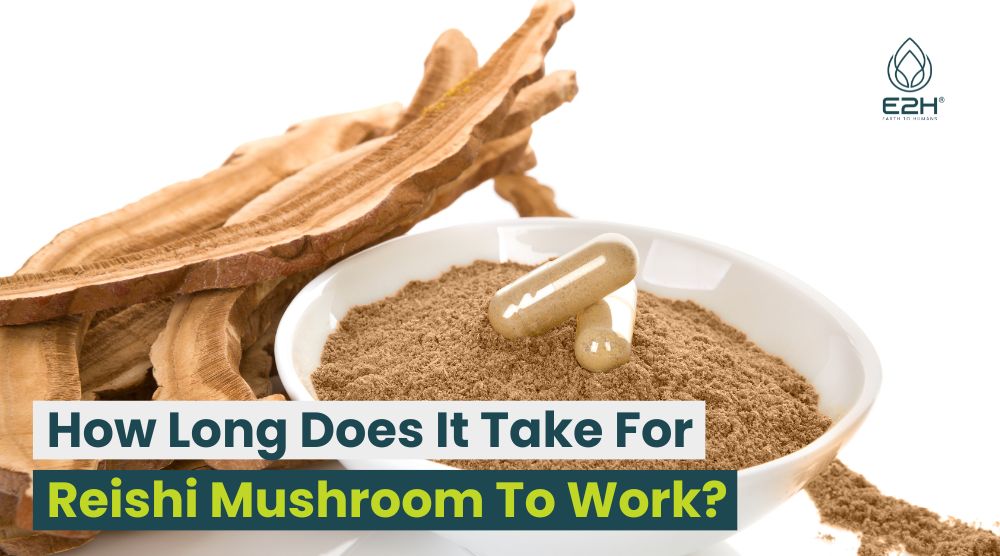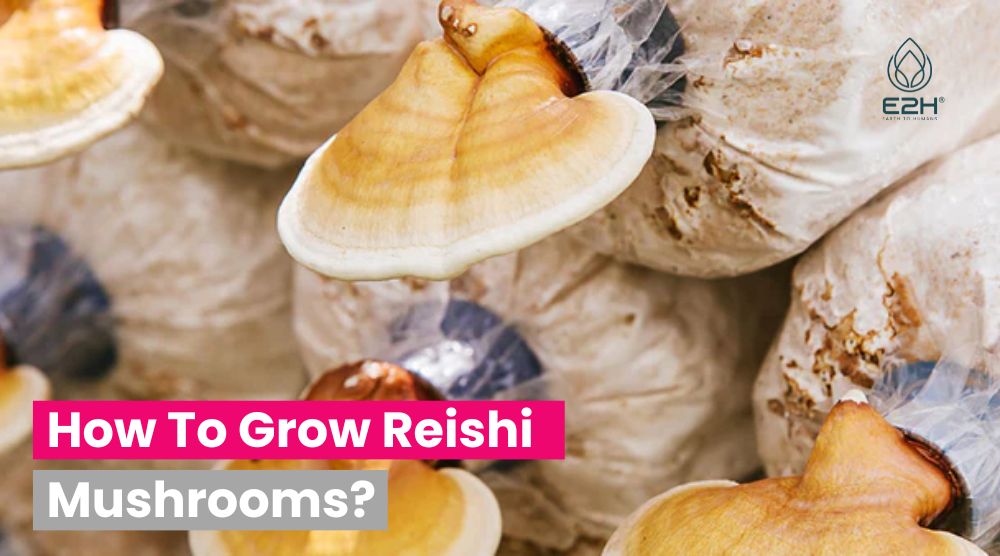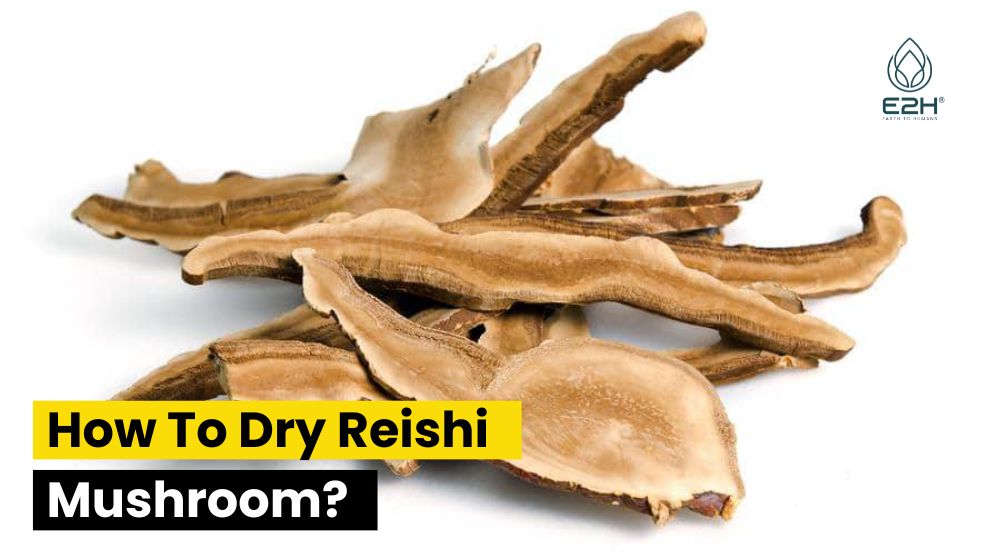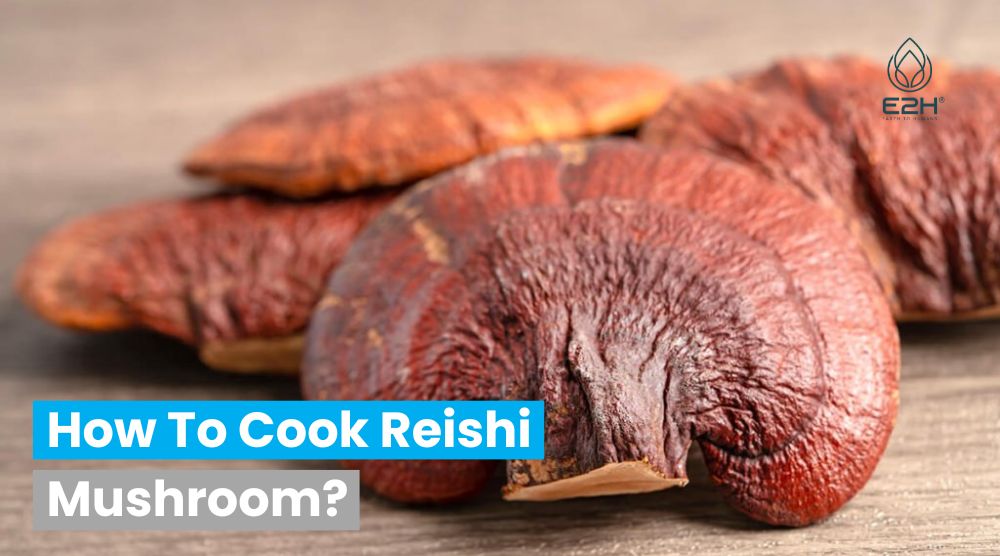How To Prepare Reishi Mushroom: To prepare Reishi mushroom, clean and slice it, then simmer in water for at least 2 hours. This process extracts its medicinal properties, ideal for teas, decoctions, or adding to soups. Strain before consuming fresh mushroom to enjoy its health benefits.
Want to learn all about Reishi mushrooms? Check out this easy guide! We’ll show you how to prepare them, give you cool tips, and share tasty recipes. Whether you’re just starting or already know a bit, we have lots of great info. Keep reading to find out how to find Reishi mushrooms can be a healthy and fun addition to your meals!
What Makes Reishi Mushrooms a Superfood?
Reishi mushrooms earn their superfood status due to their rich array of health-promoting compounds. These include polysaccharides, which boost the immune system, and triterpenes known for their anti-inflammatory and anticancer properties.
Reishi mushrooms are also packed with antioxidants that combat cellular damage and aging. They support heart health by aiding in blood pressure and cholesterol management. Additionally, their adaptogenic qualities help the body cope with stress and improve sleep.
This combination of immune support, disease prevention, and overall wellness benefits is what makes reishi mushrooms a valuable addition to a healthy diet.
How to Choose the Best Reishi Mushrooms for Preparation?
Choosing the best Reishi mushrooms for preparation involves looking for certain qualities. Fresh Reishi should be firm, with a glossy surface and no signs of bruising or damage. For fresh or dried mushrooms of Reishi, ensure they are intact and not overly crumbly.
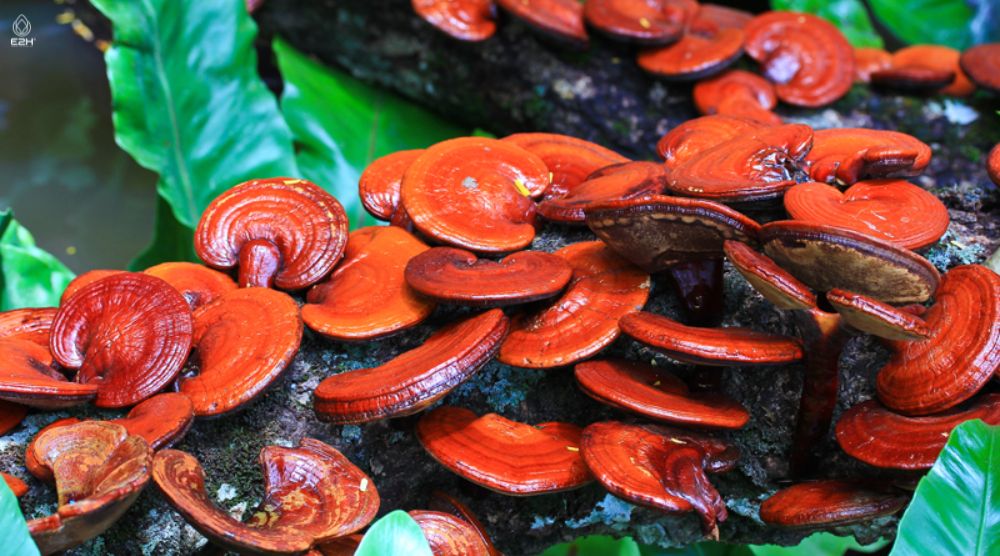
Wild Reishi mushrooms are often considered superior, but cultivated Ganoderma lucidum can also provide good quality. The color should be a deep reddish-brown, indicative of maturity. If possible, opt for organically grown mushrooms to avoid potential contaminants. Smell is also a factor; they should have a distinct earthy aroma, not musty or unpleasant.
The Essential Steps to Clean and Cut Reishi Mushrooms
Cleaning and cutting Reishi mushrooms, known for their medicinal benefits, involves a few essential steps:
- Rinse Gently: Begin by gently rinsing the Reishi mushrooms under cool water. This helps remove any dirt or debris. Since they are often used dried, a quick rinse is sufficient to avoid waterlogging.
- Pat Dry: After rinsing, pat the mushrooms dry with a clean towel. It’s important to remove as much moisture as possible to maintain their texture and quality.
- Trimming: Trim off any tough, woody parts, especially the stem area, which can be quite hard. These parts are not typically used due to their tough texture.
- Slicing: Use a sharp knife to slice the Reishi mushrooms. If they are fresh, they may be a bit tough, so slice carefully. For dried Reishi, you might need a more robust knife or kitchen scissors. Slice them into thin pieces, which will help in the extraction of their medicinal compounds during cooking or brewing.
- Drying (If Needed): If you plan to store them, ensure the sliced Reishi mushrooms are completely dry. You can air-dry them or use a dehydrator.
- Storing: Store the prepared Reishi mushrooms in an airtight container. Keep them in a cool, dry place to preserve their medicinal qualities.
How to Prepare a Traditional Reishi Mushroom Decoction?
Preparing a traditional Reishi mushroom decoction, a potent way fresh mushrooms to extract their medicinal benefits, involves several steps:
- Gather Ingredients: You’ll need dried Reishi mushrooms. Fresh Reishi can also be used, but dried is more common for decoctions.
- Rinse the Mushrooms: Gently rinse the dried Reishi mushrooms to remove any dust or particles.
- Slice the Mushrooms: Cut the Reishi into smaller pieces. This increases the surface area, allowing more extraction of beneficial compounds.
- Water Ratio: For every cup of water, use about one to two teaspoons of sliced Reishi. If you prefer a stronger decoction, increase the amount of mushrooms.
- Boiling: Place the mushrooms in a pot of cold water. Slowly bring the water to a boil.
- Simmer: Once boiling, reduce the heat and let it simmer. Traditional decoctions are simmered for at least two hours. The longer you simmer, the more potent the decoction.
- Strain: After simmering, strain the liquid to remove the mushroom pieces. The decoction will have a dark color and a bitter taste.
- Storage: Store the decoction in the refrigerator for up to a week. You can drink it warm or cold.
- Flavoring (Optional): Due to its bitter taste, you might want to add honey, ginger, or lemon to improve the flavor.
Exploring Diverse Reishi Tea Recipes
Exploring diverse Reishi tea recipes allows for enjoying this medicinal mushroom in various flavorful ways:
Classic Reishi Tea:
- Simmer sliced dried Reishi mushrooms in water for 30 minutes to 2 hours.
- Strain and serve, adding honey or lemon for taste.
Reishi Ginger Tea:
- Combine Reishi slices, fresh ginger, and water in a pot.
- Simmer for an hour, strain, and sweeten with honey.
Reishi Chai:
- Brew Reishi with traditional chai spices like cinnamon, cardamom, and cloves.
- Simmer for an hour, strain, and add milk and sweetener.
Reishi Lemonade:
- Prepare Reishi tea and let it cool.
- Mix with lemon juice and sweetener, serve chilled.
Reishi and Herbal Blend:
- Mix Reishi slices with other herbal teas like peppermint or chamomile.
- Brew for an hour, strain, and enjoy.
Can You Cook with Reishi Mushrooms?
Yes, you can cook with Reishi mushrooms, although they are more commonly used for their medicinal properties than their culinary ones due to their bitter taste. Reishi mushrooms are typically added to soups, broths, and teas.
When cooking, they are often simmered for a long time to extract their beneficial compounds. Fresh Reishi can be tough and woody, so it’s usually sliced thinly or powdered. Dried Reishi mushrooms are also popular, especially in teas and decoctions.
For a more palatable dish, they are often combined with other flavorful ingredients to balance their bitterness.
Using Reishi Mushroom Powder: Tips and Tricks
Using Reishi mushroom powder effectively involves several tips and tricks:
- Start Small: Begin with a small amount, like half a teaspoon, to gauge its strong flavor and effects.
- Blend in Beverages: Mix Reishi powder into coffee, tea, or smoothies. It pairs well with cocoa or matcha.
- Use in Cooking: Sprinkle it into soups, stews, or sauces for an added health boost.
- Balance the Flavor: Counteract its bitterness with sweeteners like honey or maple syrup.
- Combine with Other Ingredients: Mix with other medicinal mushrooms or herbs for enhanced benefits.
- Storage: Keep the powder in an airtight container in a cool, dry place to preserve its potency.
- Consistent Use: For best results, incorporate it regularly into your diet.
How to Make Reishi Tinctures and Extracts at Home?
Making Reishi tinctures and extracts at home is a straightforward process:
- Gather Materials: You’ll need dried Reishi mushrooms, high-proof alcohol (like vodka or grain alcohol), a jar, and a strainer.
- Prepare the Mushrooms: Chop or grind the dried Reishi into small pieces to increase the surface area.
- Jar Filling: Place the chopped Reishi in a jar. The amount of Reishi can vary depending on the desired strength of the tincture.
- Add Alcohol: Pour the alcohol over the mushrooms, ensuring they are completely submerged. The ratio of alcohol to mushrooms should be about 5:1.
- Seal and Store: Close the jar tightly and store it in a cool, dark place. Let it sit for at least two months, shaking it occasionally to mix the contents.
- Strain: After two months, strain the mixture through a fine mesh or cheesecloth, squeezing out as much liquid as possible.
- Bottle the Tincture: Transfer the strained liquid into dark dropper bottles for easy use.
- Dosage: Use the tincture as directed, typically a few drops at a time.
Crafting a Reishi Sleep Tonic: Does It Help?
Crafting a a Reishi mushroom tea sleep tonic can be beneficial for improving sleep quality. Reishi mushrooms are known for their adaptogenic properties, which help the body manage stress, a common hindrance to good sleep.
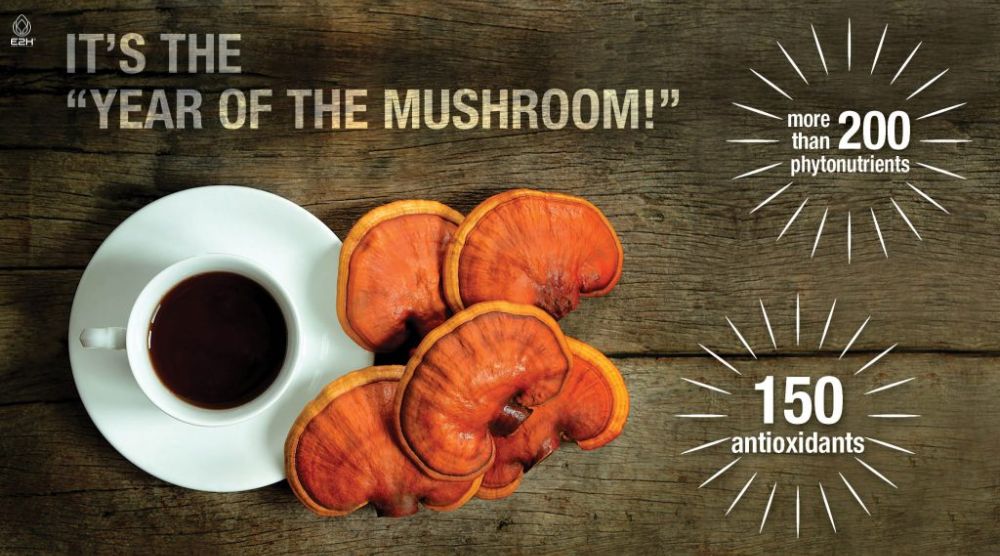
They also contain compounds that may support the natural sleep cycle and promote relaxation. To make a Reishi sleep tonic, simmer sliced Reishi in water for an hour, strain, and mix with calming herbs like chamomile or lavender.
Adding a natural sweetener like honey can improve taste. Drinking this tonic before bedtime may aid in achieving a more restful and deeper sleep.
What Are the Best Flavor Pairings with Reishi Mushrooms?
Reishi mushrooms have a distinct bitter taste, which can be balanced in delicious dishes with the right flavor pairings. Sweet ingredients like honey or maple syrup can counteract the bitterness. Spices such as ginger, cinnamon, or star anise also complement Reishi’s earthy flavor.
In savory dishes, garlic, soy sauce, and umami-rich ingredients like miso work well. For teas or tonics, pairing Reishi with citrus fruits, like lemon or orange, adds a refreshing note.
Herbs like mint or chamomile can enhance Reishi’s calming effects in teas. When used in soups, pairing with vegetables like carrots or onions can create a harmonious blend of flavors.
Storing Reishi Mushrooms: Best Practices
Storing Reishi mushrooms correctly is crucial for maintaining their medicinal qualities. For fresh Reishi, they should be stored in a refrigerator, ideally in a paper bag to allow for air circulation, and used within a week.
Dried Reishi mushrooms have a longer shelf life and should be kept in an airtight container in a cool, dry place, away from direct sunlight and moisture. This method can preserve their quality for up to a year. It’s important to ensure that the container is completely dry before storing the dried mushrooms, to prevent mold growth.
Regularly checking for any signs of spoilage, like a musty smell or discoloration, is also recommended. Proper storage ensures that the Reishi mushrooms retain their beneficial compounds and are safe for consumption.
What Is the Safe Way to Consume Reishi Mushrooms?
Consuming Reishi mushrooms safely involves several key considerations:
- Start with Small Doses: Begin with a small amount to see how your body reacts, especially if you’re new to Reishi.
- Consult a Healthcare Provider: Before adding Reishi to your regimen, especially if you have existing health conditions or are taking medication.
- Avoid During Pregnancy/Breastfeeding: There’s limited research on Reishi’s effects in these conditions, so it’s best to avoid them.
- Watch for Allergic Reactions: Discontinue use if you experience any allergic symptoms like itching or difficulty breathing.
- Limit Long-Term Use: While Reishi is generally safe, long-term use may lead to side effects. Regular breaks are recommended.
- Proper Preparation: Reishi should be well-cooked, as raw or improperly prepared mushrooms can be difficult to digest.
- Avoid with Certain Conditions: People with low blood pressure or those on blood-thinning medication should use Reishi cautiously due to its potential effects on blood pressure and clotting.
What’s Next for Reishi Mushrooms? Emerging Trends and Uses
The future of Reishi mushrooms looks promising with several emerging trends and uses. There’s growing interest in integrating a Reishi extract into functional foods and beverages, like energy bars and coffees, for an added health boost.
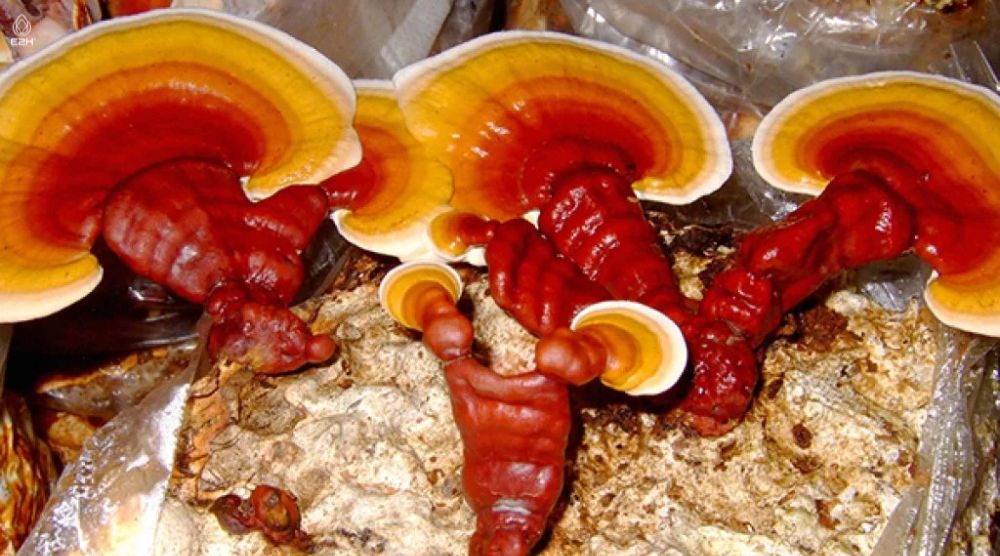
In skincare, Reishi’s anti-inflammatory and antioxidant properties are being harnessed in creams and serums for anti-aging and skin health. Research is also exploring Reishi’s potential in supporting mental health, particularly in stress reduction and sleep improvement.
Additionally, there’s an increasing focus on sustainable cultivation methods to meet the rising demand while preserving natural resources. As scientific research progresses, we may see Reishi being used more in conventional medicine for its therapeutic properties.
How to Incorporate Reishi Mushrooms in Various Culinary Dishes?
Incorporating Reishi mushrooms into culinary dishes offers a unique way to enjoy their health benefits:
- Teas and Broths: Simmer sliced Reishi in water to make a healthful tea or broth, adding herbs for flavor.
- Soups and Stews: Add powdered or sliced Reishi to soups and stews. Its earthy flavor complements hearty recipes.
- Sauces and Gravies: Mix Reishi powder into sauces or gravies for an umami boost.
- Smoothies: Blend Reishi powder into smoothies for a nutritious kick.
- Baking: Incorporate Reishi powder into bread, muffins, or energy bars for added health benefits.
- Coffee and Hot Drinks: Add a teaspoon of Reishi powder to your morning coffee or hot chocolate.
What Are the Unique Flavors and Textures of Fresh vs Dried Reishi Mushrooms?
Fresh and dried Reishi mushrooms offer distinct flavors and textures. Fresh Reishi has a slightly softer, yet still tough and woody texture, with a more subtle, earthy flavor. Its bitterness is less pronounced compared to its dried counterpart. Fresh Reishi is often sliced thinly to manage its tougher texture and is usually simmered for long periods to soften.
Dried Reishi, on the other hand, intensifies in flavor and bitterness, making it more potent. The drying process concentrates its earthy, woody notes. It becomes quite hard and is typically rehydrated or simmered for a long time to extract its natural flavors, and medicinal compounds.
Dried Reishi is often ground into a powder for easier consumption and integration into various dishes and beverages. The choice between fresh and dried often depends on the desired intensity of flavor and the specific culinary or medicinal application.
FAQs
Can I use fresh Reishi mushrooms instead of dried for tea?
Yes, fresh Reishi can be used for tea, but simmer longer for full flavor extraction.
What’s the best way to grind dried Reishi mushrooms?
Use a coffee grinder or a mortar and pestle for a fine, even powder.
How long should I simmer Reishi mushrooms for a decoction?
Simmer for at least 2 hours to extract maximum medicinal compounds.
Is it necessary to peel Reishi mushrooms before use?
No, peeling isn’t required; just clean and slice them before use.
Can Reishi mushrooms be eaten raw?
No, they should be cooked or simmered due to their tough texture and to release beneficial compounds.
Conclusion
In conclusion, preparing Reishi mushrooms is a journey into the world of medicinal fungi. Whether you’re brewing a tea, making a decoction, or experimenting with culinary uses, Reishi offers a unique blend of health benefits and earthy flavors. Remember, patience is key in unlocking their potential. So, go ahead, try incorporating Reishi into your routine, and embrace the natural wellness it brings to your life!




